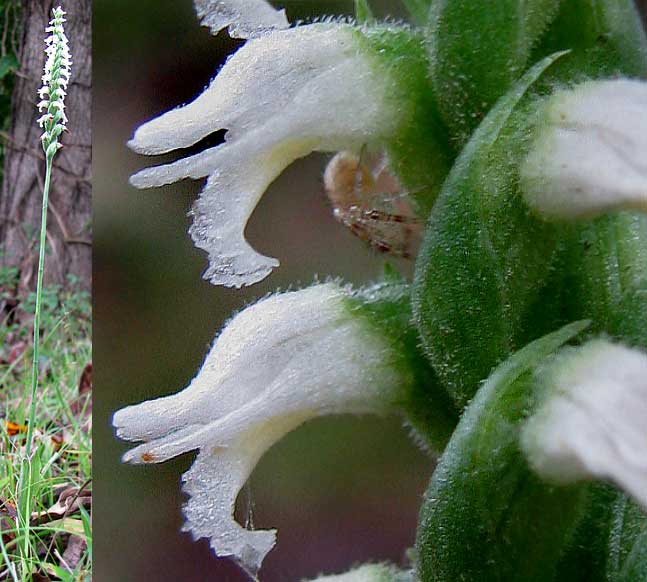Excerpts from Jim Conrad's
Naturalist Newsletter

from the the October 18, 2009 Newsletter, from near Natchez, Mississippi
NODDING LADY'S TRESSES FLOWERING
One sign of the approaching cold season is the emergence of the dainty little white-flowered orchid known as Nodding Lady's Tresses, SPIRANTHES CERNUA. One growing beside my old hermit trailer is shown above.
The slender, foot-tall plant is shown at the left in the picture. Most of the picture is taken up by a close-up showing how each white corolla neatly arcs downward from atop an upward rising base, and that base is enveloped by a green, sharp-pointed bract that arcs upward with it.
The Flora of North America describes this species as a "facultatively agamospermic polyploid compilospecies" and further explains that "unidirectional gene flow from related diploids generates a wide range of novel forms and races."
Without looking anything up I could figure out that it was saying that the species produces lots of weird forms, but I had to go online to figure out some of the bigger words.
"Agamospermic" is defined as "The asexual formation of embryos and seeds without the occurrence of fertilization," which means that plants arising from agamospermic-produced seeds are basically clones of the parents.
One definition of "compilospecies" is that it's a "genetically aggressive, highly polymorphic species, often of complex hybrid origin, often containing more than one ploidy level, often very weedy, and obscuring other species boundaries."
At this point you have to know about ploidy, and have a general feeling for how things evolve at the genetic level to appreciate what's being said. But, it's interesting stuff. Wikipedia's Ploidy Page is at https://en.wikipedia.org/wiki/Ploidy.
Once you start getting a drift of what the modest little orchid next to my trailer is doing, you just have to stand and gawk at it awhile.